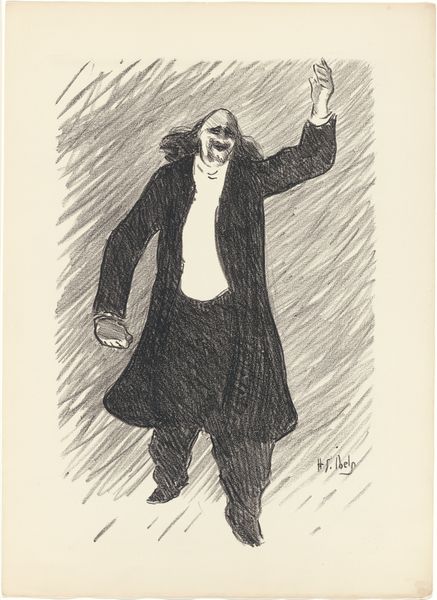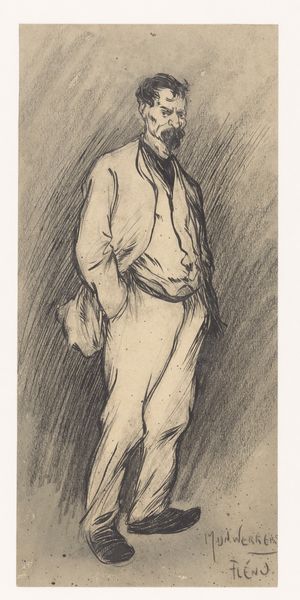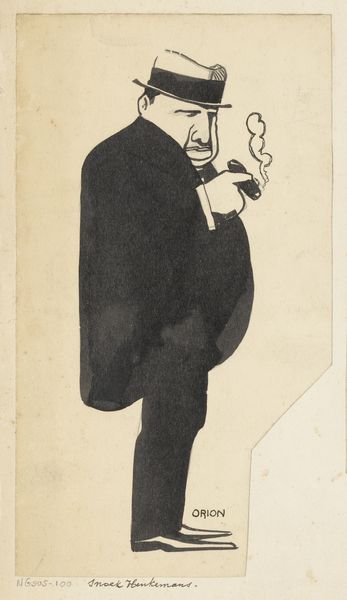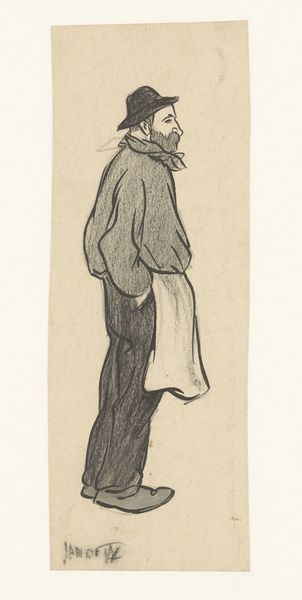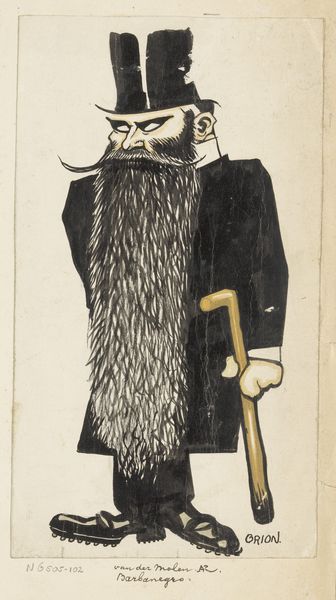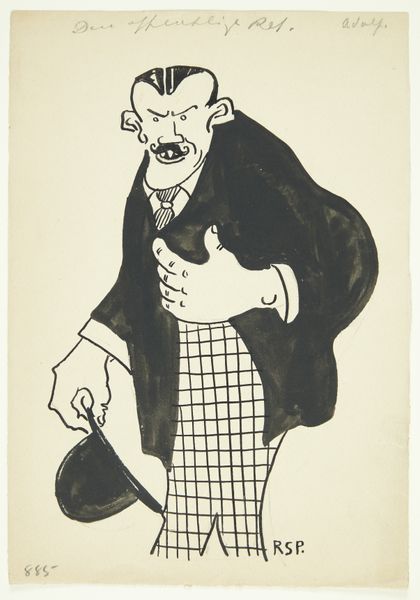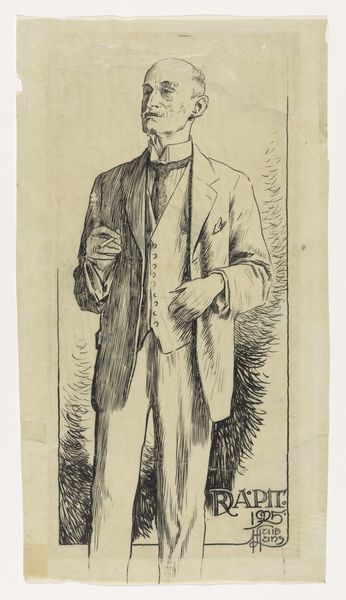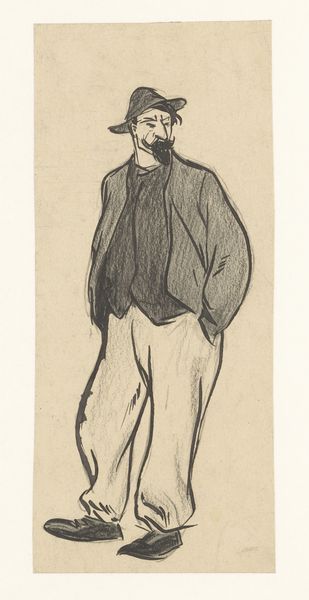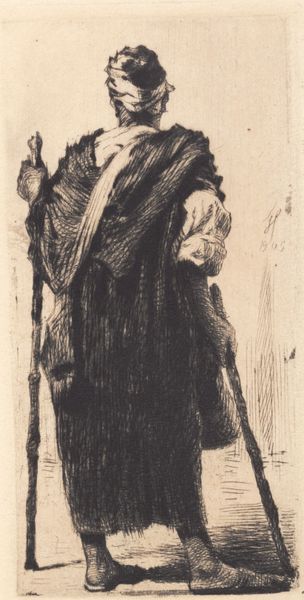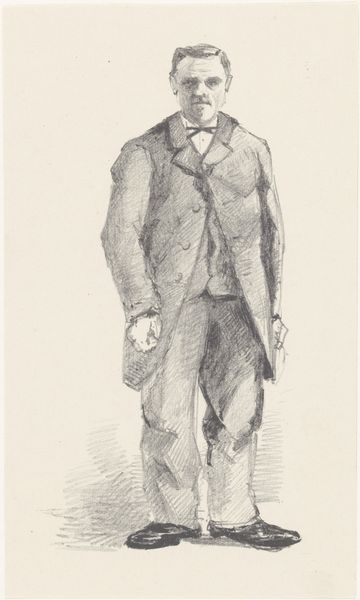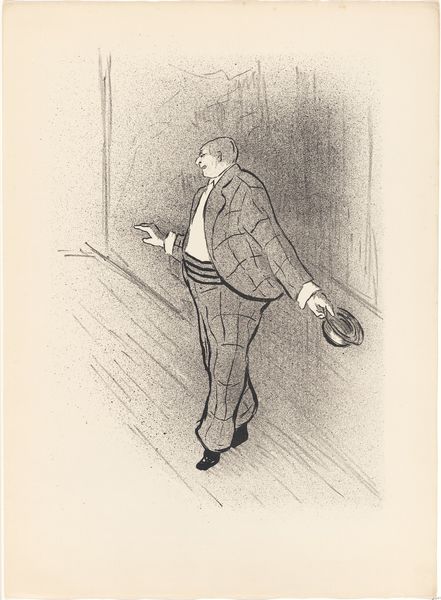
Dimensions: height 440 mm, width 320 mm
Copyright: Rijks Museum: Open Domain
Curator: Here we have Henri-Gabriel Ibels's "Portret van de chansonnier Marcel Legay," a pencil drawing from 1893, currently housed at the Rijksmuseum. It depicts the cabaret singer Marcel Legay in a rather…exuberant pose. Editor: Exuberant is one word for it. My immediate impression is a sense of frantic energy. The figure seems almost swallowed by the stark background, yet the charcoal lines create this unsettling dynamism. It's all quite expressive, wouldn’t you say? Curator: Absolutely. Ibels, deeply embedded in the artistic and political milieu of late 19th-century Paris, uses caricature here to probe Legay’s public persona and its potential artifice. Think about the rise of the café-concert and the shaping of celebrity through performance. How much of Legay's identity was constructed for the stage, and what did that mean in terms of social authenticity? Editor: Which speaks volumes about the labor behind crafting that persona, right? Looking closely, you see how Ibels uses rapid, almost frantic, pencil strokes to build volume, especially in the coat. The materiality itself—the graphite, the paper—reflects the ephemeral nature of performance. Was this sketch commissioned, or a more spontaneous capturing of Legay at work? Curator: Knowing Ibels's penchant for social commentary and his associations with Le Barc de Boutteville and later Toulouse-Lautrec, it’s tempting to see this as something of an insider’s take, a critique perhaps, of the constructed self. Remember the fin-de-siècle anxieties around identity and authenticity—and the cabaret was certainly a key site for negotiating these concerns. Editor: Precisely. The very *process* of the drawing, its roughness, suggests a resistance to the polished image typically associated with celebrity portraiture. Ibels isn't interested in idealizing Legay, but rather in laying bare the performative aspects of his trade through the deliberate application of pencil on paper. The weight and grain of the pencil is striking. Curator: And it's fascinating to consider the potential implications for today's performative social-media culture. Ibels asks, subtly, what happens to identity in an age of increasing theatricality? Editor: Indeed. Looking at Ibels' work through a lens of materiality and production makes the artist’s commentary even more evident. It allows us to consider labor and context as much as form. Curator: It serves as a reminder that what we see is very often manufactured, constructed. Editor: An essential provocation in our era of manufactured realities.
Comments
No comments
Be the first to comment and join the conversation on the ultimate creative platform.
